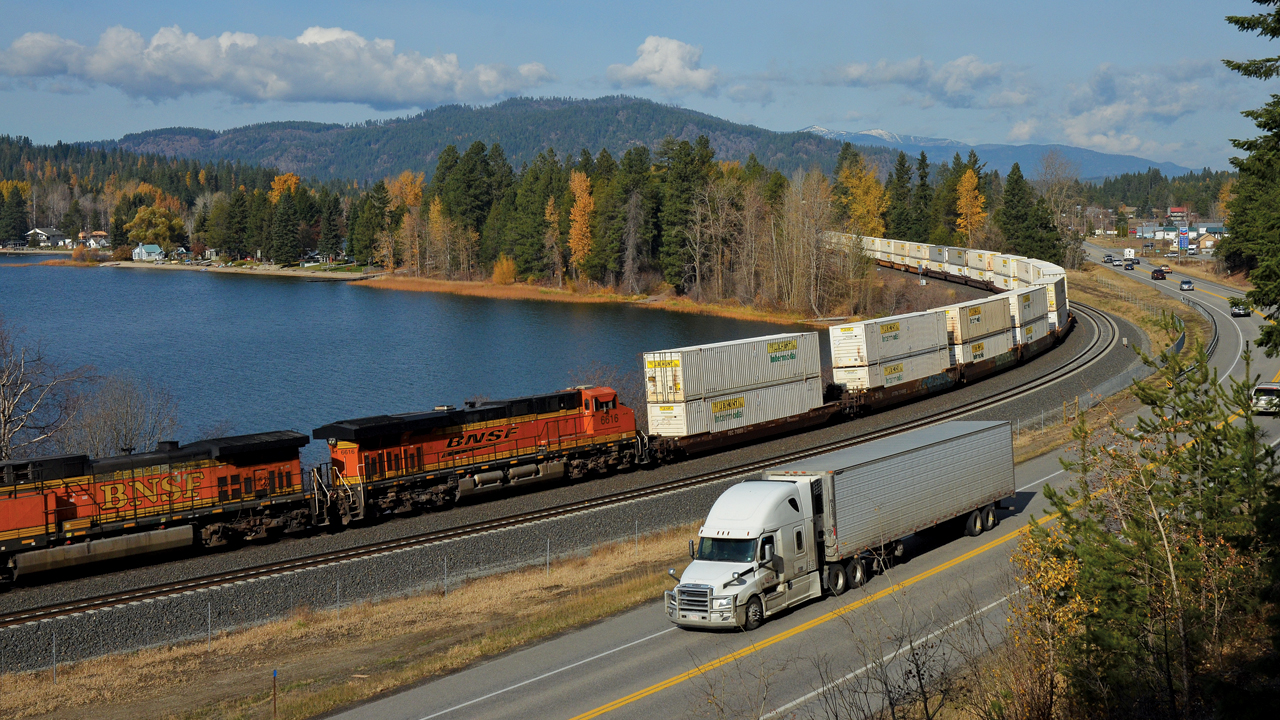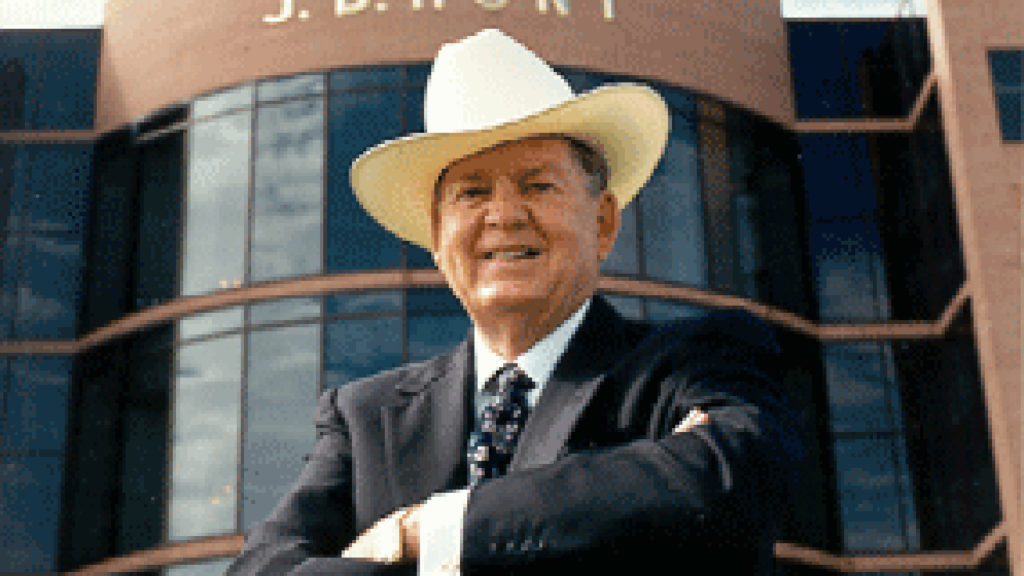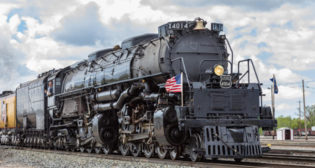
JBHT, BNSF Stackin’ ‘Em Up
Written by William C. Vantuono, Editor-in-Chief
Bruce Kelly photo
J.B. Hunt Transport Services Inc. (JBHT) and BNSF have launched a joint capacity expansion initiative to accommodate new intermodal container services and “meet the expanding needs of current customers.”
JBHT, which has handled more than four million container loads since 2020, plans to add up to 150,000 containers to its existing fleet during the next three to five years, a 40%-plus increase from its year-end 2021 count, “based on current and projected trends.” The company will also add supporting chassis “based on market need.”
“Over the years, both companies have invested billions of dollars to ensure intermodal’s ability to grow with customers and meet the increasing demand for intermodal services,” the partners said.
BNSF said it will complement JBHT’s equipment ramp-up with “increased capability at multiple intermodal facilities. To further integrate our joint service product with J.B. Hunt, BNSF is providing several property locations around key intermodal hubs in Southern California, Chicago and other key markets to increase efficiency at terminals. Additionally, BNSF will bolster its railcar equipment to accommodate the anticipated increase in container capacity, which will support efficient throughput and strong service performance.”
JBHT and BNSF said they “will leverage technology, including the industry leading J.B. Hunt Carrier 360°®, to improve efficiencies in rail transport. The J.B. Hunt Carrier 360° digital freight matching platform is one of the few in the industry to support intermodal services. Based on analysis of J.B. Hunt Carrier 360° transactions and annual bid activity, the company estimates that an additional 7 to 11 million shipments could be converted to intermodal, supporting long-term growth opportunities while avoiding carbon emissions.”
“Demand for intermodal services has grown significantly in recent years as companies look to secure capacity, while reducing costs and their carbon footprint,” said John Roberts, President and CEO of J.B. Hunt. “Over the past few years, intermodal has been disrupted by increased demand and tight capacity, resulting in poor container velocity and long dwell times. Together, J.B. Hunt and BNSF will enhance their work to bring back the consistency and reliability customers expect with intermodal services and further embrace intermodal conversion and transloading services. This priority falls directly in line with J.B. Hunt’s mission statement to create the most efficient transportation network in North America.”
“More than 30 years ago, J.B. Hunt Transport Services and BNSF predecessor Atchison, Topeka and Santa Fe Railway Co. loaded a Hunt trailer onto a railcar to help usher in the modern age of intermodal freight transport,” said Katie Farmer, BNSF President and CEO. That demonstration, conducted out of Chicago for the benefit of JBHT founder Johnnie Bryan Hunt and some of his executives, resulted in the famous handshake agreement between him and then-ATSF President Mike Haverty. Haverty had a JBHT trailer loaded onto an ATSF flat car that was coupled to a business car at the rear of the consist. He was able to show the superior ride quality that ATSF could provide for a JBHT trailer, up close and personal. Shortly afterward, he took Hunt and his board of directors on a train ride from Chicago to Kansas City. As legend has it, as the train reached Galesburg, Ill., Hunt, a larger-than-life personality who typically sported a ten-gallon hat, extended his hand to Haverty and said, ”Let’s do a deal.” That handshake resulted an agreement to use the railroad to haul JBHT long-distance trucks from the West Coast to Chicago, initiating a contract that to this day remains one of BNSF’s most lucrative.

JBHT and ATSF “disrupted the transportation industry in 1989 by developing a double-stack shipping solution that would complement both rail and trucking services, a first for modern transportation,” BNSF noted.* “BNSF’s industry-leading service combined with J.B. Hunt’s unparalleled intermodal product has set the standard for seamless door-to-door service. We will raise the bar on service to the next level through technology and innovation as we further integrate our platforms with real-time data exchanges. We want our customers to enjoy the best of both worlds: economical and environmentally friendly service delivered by transportation’s premium providers.”
J.B. Hunt said it “operates the largest company-owned intermodal fleet in North America with more than 109,000 53-foot containers supported by company-owned chassis and tractors.” BNSF said it “operates the largest intermodal rail network handling roughly one million more intermodal units each year than any other railroad, and through investments offers the fastest intermodal route between Southern California and the Midwest.” That would be the now-fully double-tracked Chicago-Los Angeles Transcon route
* Editor’s Note: Southern Pacific (SP), along with Malcom McLean, devised the double-stack intermodal car in 1977. SP then designed the first car with ACF Industries that same year. In 1984, American President Lines started working with Union Pacific, and that same year, the launched Stacktrain, the first all-double-stack transcontinental train. It departed Los Angeles for South Kearny, N.J., transferring from UP to the Chicago & North Western Railway and then to Conrail.



